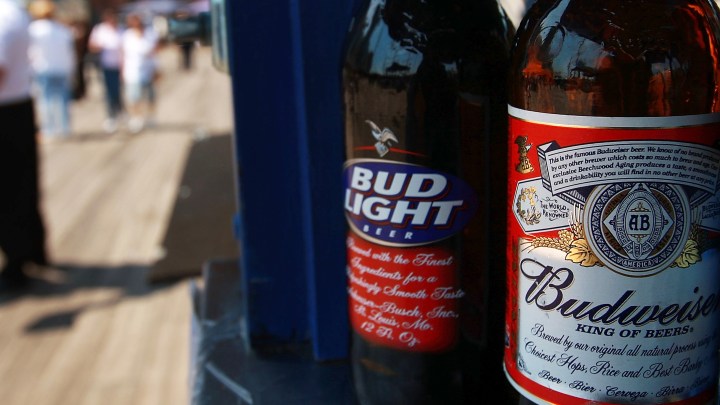
World’s No.1 beer company falters in U.S.

Raise a glass to the world’s biggest brewer, Belgium-based conglomerate Anheuser-Busch InBev, which reported a surge to $2.48 billion in second-quarter net profit, up from $1.94 billion one year ago.
But Anheuser-Busch InBev’s results were weaker in the U.S. market, where the company’s flagship beer brands continue to lose ground to craft brewing, wine and spirits.
In spite of the blitz of glitzy marketing — like this Game of Thrones-themed jousting ad involving the “Bud Knight” that ran during Superbowl LIII — American consumers keep dropping the company’s best-known beers. The company lost 0.55% U.S. market share in the second quarter, continuing a decade-long decline, said Eric Shepard, executive editor of “Beer Marketer’s Insights.”
“In 2008, it was just below a 49% share, and we estimate it at about 41% in 2018. It’s been the erosion of the mainstream brands — Bud Light and Budweiser — and to a certain extent, their lower-priced brands — Natural Light, Busch and Busch Light.”
Shepard said domestic competitors like Coors have also lost ground.
Bart Watson, chief economist at the Brewers Association, which represents small independent breweries, described a principal trend in the U.S. beer market as “premiumization.”
“Demand for more variety, brands from small and independent local brewers. People are trading up, they’re generally drinking a little bit less but drinking a little bit better, price point-wise,” he said.
Beer writer Joshua M. Bernstein said these drinkers are looking to try exotic and unexpected flavors.
“If I tell you this beer tastes like raspberry pie or a chocolate peanut butter stout, you’re automatically going to have a flavor or a mental association in your head,” he said.
Bernstein said beer consumption increasingly takes place in local taprooms, “places to gather and taste beer. People want to go right to the source, they want to eat local and drink local.”
This trend, he said, is also gradually shifting consumers away from mainstream, mostly store-bought brands.
There’s a lot happening in the world. Through it all, Marketplace is here for you.
You rely on Marketplace to break down the world’s events and tell you how it affects you in a fact-based, approachable way. We rely on your financial support to keep making that possible.
Your donation today powers the independent journalism that you rely on. For just $5/month, you can help sustain Marketplace so we can keep reporting on the things that matter to you.












